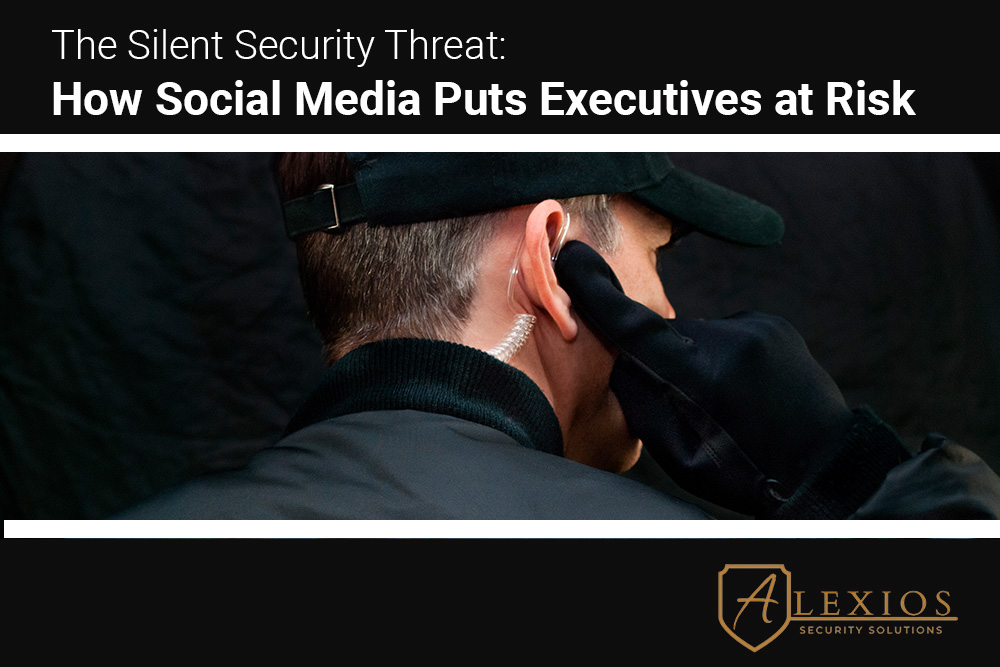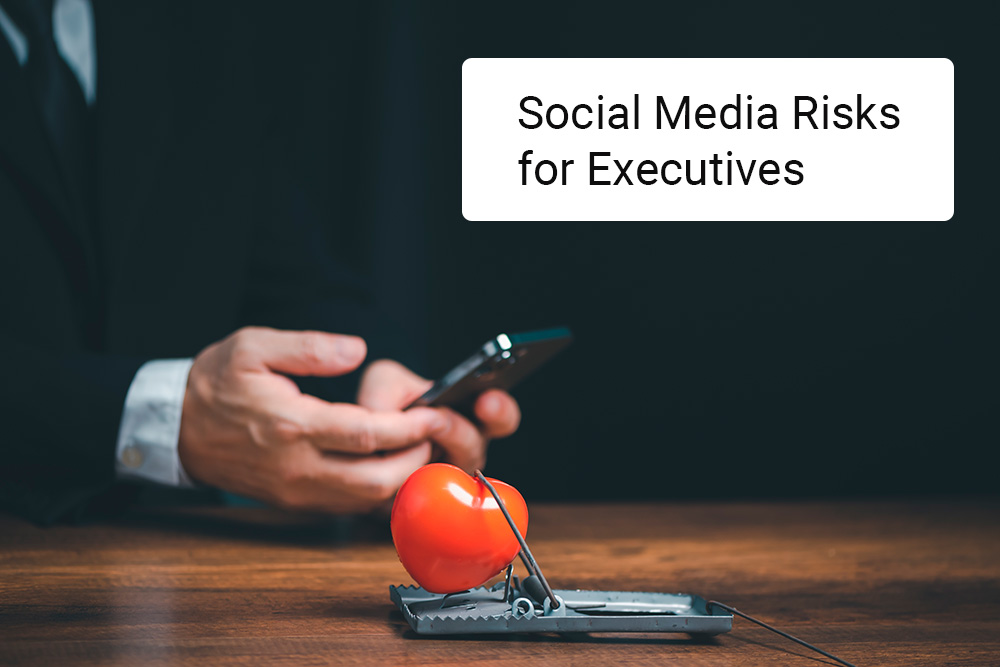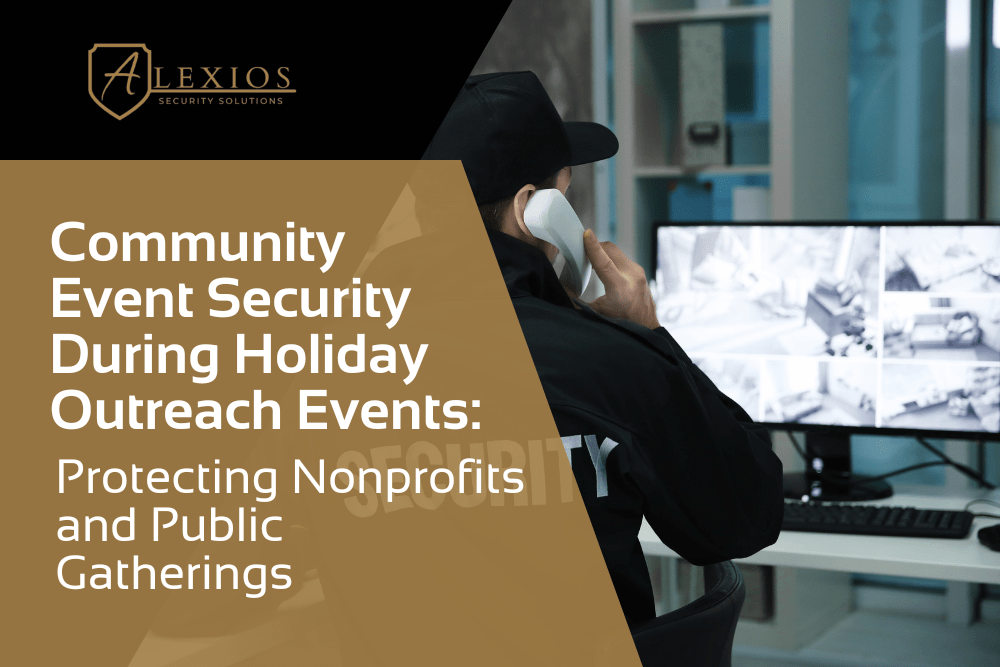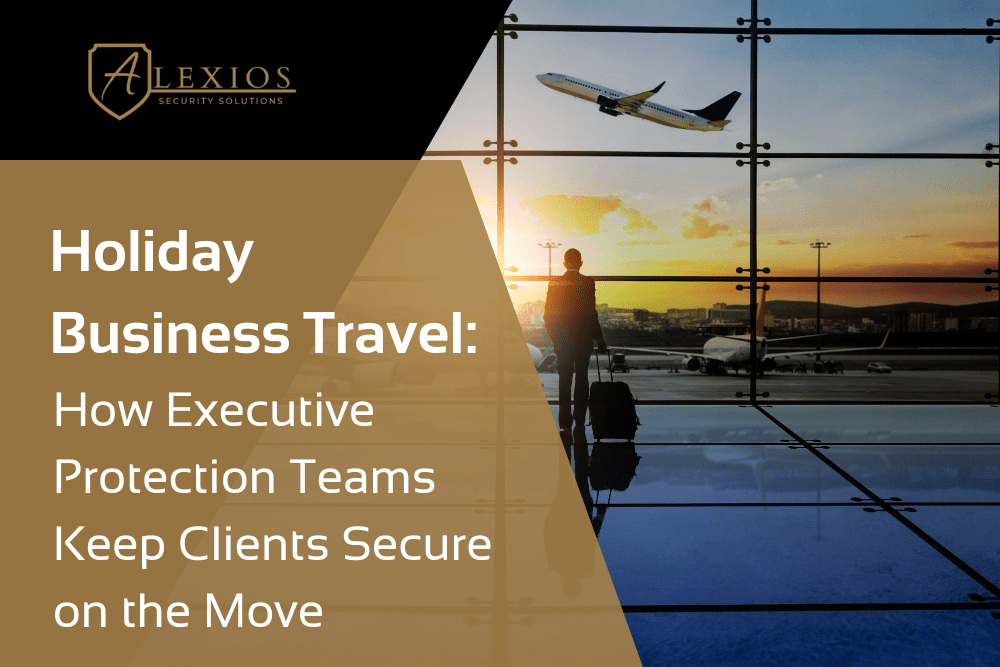
Although social media can be a positive force in many ways, such as allowing us to connect with friends and family and giving businesses a platform to advertise, there is also a darker side that can cause people and companies significant problems. Social media executive protection has become a vital component of modern physical security strategies because mistakes online can lead to both digital and physical consequences.
Cybersecurity errors can cost companies an average of $4.3 million a year, but the issues go far beyond the financial realm. Poorly managed online activity can expose executives and their families to physical threats, stalking, and targeted attacks.
Let’s take a look at a hypothetical real-world scenario where social media can put executives and their companies at risk, as well as some best practices that can help security teams and protection professionals alleviate these concerns.
Social Media Risks for Executives

Imagine a tech company called “HGH Tech” that sells employee monitoring software and has an active social media presence. They frequently post pictures and videos of the executive team delivering sales pitches and other messages directly to the public.
The company’s internal numbers show that it’s a success—these engaging videos drive high user interaction and boost sales. But at the same time, these posts increase the company’s digital footprint, providing threat actors with details they can exploit.
Their software works so well that after implementation, thousands of employees are terminated for misuse. One former employee, angry about losing his $200,000-per-year job, decides to seek revenge.
HGH’s website lists its PO Box and headquarters city. He can easily find this information online through data broker sites, which often sell personal details about high net worth individuals and corporate leaders.
He plans a new route of attack—not digital, but physical—proving how social media risks can escalate from the internet to the real world.
Potentially Damaging Information in Social Media Posts

The attacker begins by reviewing the company’s official YouTube videos. In one clip, he spots writing on a whiteboard in the background. Because he recognizes the code format from his previous job, he identifies it as a username and password combination for internal servers.
He uses this information to infiltrate the system and causes extensive damage. This type of vulnerability highlights the importance of regular risk assessment and strict executive protection protocols that include both digital and physical safeguards.
In another video, the CEO walks through the office, revealing an employee’s nameplate. This opens the door to harassment and targeted abuse—something that could have been avoided if security teams had reviewed the footage before posting.
Finally, the CEO’s personal post shows his family dancing in front of their home. The address is visible, and the attacker quickly locates the property. This oversight endangers both executives and their families, turning a simple post into a real-time safety risk.
Social Media Mistakes to Avoid

Here’s what HGH Tech did wrong:
-
Left sensitive business information visible in public posts.
-
Exposed employee names, violating personal privacy.
-
Revealed the CEO’s home address and family details online.
These errors reflect the need for executive protection training that integrates physical security awareness, agent conduct guidelines, and digital footprint management. Even minor mistakes can lead to serious executive threats when threat actors use online activity to plan real-world attacks.
listed above is obviously exaggerated to illustrate the potential dangers of social media and not very realistic, but it is still a possibility, albeit remote.
Executive Protection on Social Media Tips

Social media executive protection functions very similarly to personal protection, which means that many of the same tips will apply to companies, executives, their employees, and social media users in general. Building on the example scenario above, here are some tips and best practices to ensure that everyone remains safe and protected through both digital and physical security measures.
• Personal information in posts should be limited. If the CEO takes a weeklong vacation and wants to post a video from a ski resort, for example, it’s better to post it after their return. If people know the CEO is out of town, burglars could visit his home, and angry customers could confront him on vacation.
• Employee names and identities should only be posted if they agree. People can harass employees to get to an executive, or an employee’s stalker could find out where they work if that information isn’t closely guarded.
• Video backgrounds should be cleared of any unnecessary information, including passwords, business plans, travel plans, and anything else that isn’t related to the video. Performing a quick risk assessment before publishing content helps security teams reduce exposure to threat actors.
• Many executives can benefit from executive protection services, regardless of whether an actionable threat has been made. Although such a situation is usually pretty unlikely, it never hurts to be prepared. These protection professionals are trained to protect executives and their families from physical threats that may originate from online activity.
• Try not to get too clever. In 2010, an identity theft protection company’s CEO created an ad campaign where he posted billboards with his real Social Security Number and dared hackers to try stealing his identity. The campaign was later halted after 13 separate incidents of identity theft had been committed against him—an example of how digital footprint exposure can create real-world risk.
• Executives should also avoid controversial posts on their personal social media. Political opinions, for example, can deeply upset some people and result in threats. Although a number of these are made by people thousands of miles away with no intention of ever following through, it is important to treat all threats as valid until proven otherwise. Security teams should monitor for executive threats in real time and coordinate with physical security professionals if danger escalates.
• Anyone publicly associated with the company, including high-ranking officials, executives, members of the Board of Directors, and even lower-ranking company employees, can benefit from home safety assessments in the unlikely event that a threat escalates from online “trash talk” to something more sinister. These proactive reviews are essential for high-net-worth executives and organizations that prioritize digital and physical safety.
Above all, the best social media practices are remaining positive, avoiding controversy, and making sure that no confidential information is ever leaked out through social media posts.
Social media can be very important for a company and its executives, as it allows them to communicate directly with customers about upcoming products, exciting new features, and generally drive sales for their products or services. However, if proper precautions are not taken, the results can be very dangerous. Although the situations listed above are unlikely to happen to your company, it is important to be prepared and use best practices to avoid potential mistakes and ensure the safety of executives and their families both online and offline.





